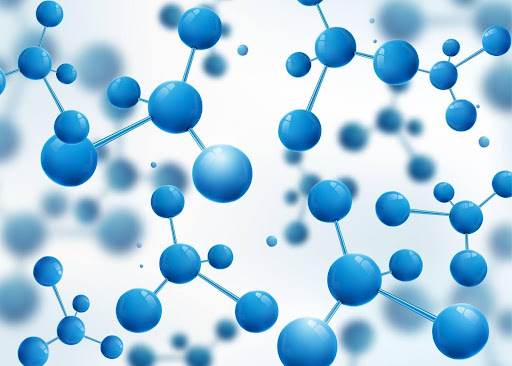
Molybdenum Disulfide (MoS2) is classified as a transition metal dichalcogenide series. Its structure consists of one Molybdenum atom surrounded by two Sulfur atoms. Strong covalent bonds exist between the atoms and weak Van der Waal forces between the layers. This structure gives it lubricating properties.
It occurs naturally as a mineral ore Molybdenite or Jodisite. The ore can be processed by floatation to get pure MoS2. It can also be obtained by thermal treatment of the Molybdenum compounds with Hydrogen Sulfide or Sulphur.
When a shear stress is applied to the MoS2 interlayer, sliding dissipates energy. The shear strength of MoS2 increases if the coefficient of friction increases. This property is called superlubricity. It has a high melting point and low vapour pressure. Due to its properties, it is used as a lubricant in heavy machinery and low-pressure applications. It can provide lubricity up to 1200 K, making it an ideal lubricant for heavy machinery.
MoS2 has a low vapor pressure and does not evaporate at low pressures. When used as a lubricant for aircraft engines it is mixed with oil. Even after the complete loss of oil MoS2 does not lose its lubricating properties because it has low vapour pressure.
It is unreactive chemically and dissolves only in strong oxidising acids like aqua regia and hot concentrated sulphuric and nitric acids. MoS2 is stable in neutral or reducing atmospheres up to 1400° C – 1500° C. In air, the oxidation rate is low for temperatures up to 370° C and rapid for temperatures above 560° C. It has a good load-carrying capacity.
MoS2 in boundary lubrication
Lubrication is defined as a process of reducing the friction and the wear of interacting surfaces in relative motion. The different types of lubrication are thick film, fluid film or hydrodynamic lubrication, thin film or boundary lubrication and extreme temperature/pressure lubrication.
MoS2 can be successfully used as a boundary lubricant. Boundary lubrication is a condition where the lubricating film becomes too thin to provide total separation. In this type of lubrication, a thin film of the lubricant is adsorbed on the surface by the weak Van der Waal forces. It is mainly used for low speeds and heavy loading conditions.
MoS2 can be used in dry powder form or as an additive in oil. It helps to reduce the friction between the metallic surfaces by forming films of the surfaces. It can bear high compression and high temperature. As a thin film is formed between the two metal surfaces direct metal-to-metal contact is avoided.
In boundary lubrication, the distance between the two metal surfaces is less and there is a possibility of squeezing out the lubricating oil films. When this occurs the load will be taken by the contact points and the two surfaces tend to get welded by the heat that is generated. This will prevent the motion of the surfaces as they adhere to each other. This is called a seizure. This situation can be avoided by using solid lubricants like MoS2.
As MoS2 is used in the solid state it will not squeeze out like a liquid detergent under high extreme pressure. MoS2 will fill in the low parts on the surface of the moving parts and form films that have a low frictional resistance. The coefficient of friction for MoS2 is 0.025 which is the lowest among any known material. The burnishing in the MoS2 gives the equipment an excellent performance life. Molybdenum Sulfide (MoS2) powder has been used as a good solid lubricant for many years.
Applications of MoS2
- Usually, solid lubricants are used where liquid lubricants do not meet the advanced requirements. For example, liquid lubricants cannot be used in application due to sealing problems, weight and environmental conditions. Solid lubricants like MoS2 reduce weight, simply lubrication and are sometimes less expensive than liquid lubricants.
- In high or ultrahigh vacuum conditions the liquid detergents can evaporate and cannot perform their lubricating function. They can even contaminate the parts. At high temperatures, the liquid lubricant can get oxidised or decomposed. At cryogenic temperatures, the liquid detergents can get solidified or become too viscous to flow. Solid lubricants like MoS2 help to overcome these problems.
- In high-pressure applications, the load can exceed the load-carrying capabilities of the liquid lubricant. In applications where contamination is an issue, liquid lubricants can be problematic as they tend to pick up dust and dirt from the environment. Solid lubricant can be used in such conditions.
- Most of the space applications work in a vacuum environment and usually use solid lubricants like MoS2.